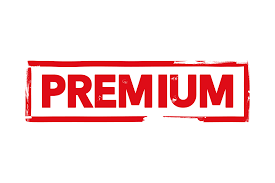Introduction
When applying for a loan, you may come across the term “loan premium.” But what exactly does it mean? A loan premium refers to an additional cost or fee charged by lenders on top of the principal amount and interest. It can include insurance premiums, processing fees, or other charges that borrowers must pay.

Understanding loan premiums is crucial because they affect the total cost of borrowing. In this guide, we’ll break down everything you need to know—what a loan premium is, how it works, its types, benefits, drawbacks, and tips to manage it effectively.
What Is a Loan Premium?
A loan premium is an extra cost associated with a loan, often added to cover additional services like insurance, administrative fees, or risk coverage. It can be a one-time payment or recurring charge, depending on the loan type and lender policies.
Key Features of Loan Premiums:
- Added to the principal or interest.
- Can be mandatory (e.g., insurance) or optional (e.g., faster processing).
- Varies by lender and loan type.
Types of Loan Premiums
Loan premiums come in different forms, depending on the loan agreement. Here are the most common types:
1. Insurance Premium
Many lenders require borrowers to take insurance (like life or property insurance) to secure the loan. The premium is added to the loan repayment.
Example: A home loan may include mortgage insurance to protect the lender if the borrower defaults.
2. Processing Fee Premium
Lenders charge a processing fee to cover administrative costs. This can be a fixed amount or a percentage of the loan.
3. Risk Premium
High-risk borrowers (poor credit score, unstable income) may be charged extra as a risk premium to compensate the lender for potential defaults.
4. Prepayment Premium
Some loans penalize early repayment. If you pay off the loan before the term ends, you might have to pay a prepayment premium.
5. Late Payment Premium
Missing due dates can attract late fees, increasing the total loan cost.
How Does a Loan Premium Work?
Loan premiums are either:
- Included in EMI (Equated Monthly Installments): The premium is spread across monthly payments.
- Paid Upfront: A one-time fee at the start of the loan.
Example:
- Loan Amount: $50,000
- Interest Rate: 8%
- Insurance Premium: $1,000 (one-time)
- Processing Fee: 1% ($500)
- Total Loan Cost: $50,000 + $1,000 + $500 = $51,500
Pros and Cons of Loan Premiums
Advantages
✅ Lower Risk for Lenders: Insurance premiums protect lenders, making loans more accessible.
✅ Better Loan Approval: Paying a risk premium can help high-risk borrowers secure loans.
✅ Financial Protection: Insurance-linked premiums safeguard borrowers in emergencies.
Disadvantages
❌ Higher Borrowing Cost: Premiums increase the total repayment amount.
❌ Hidden Charges: Some lenders add unnecessary premiums without clear disclosure.
❌ Reduced Flexibility: Mandatory premiums limit borrower options.
How to Reduce Loan Premium Costs?
- Compare Lenders: Check multiple lenders for lower premium rates.
- Negotiate Fees: Some premiums (like processing fees) can be reduced.
- Improve Credit Score: A good credit score lowers risk premiums.
- Opt-Out of Unnecessary Add-ons: Avoid optional premiums if not needed.
- Prepay When Possible: Some loans allow partial prepayment without penalties.
Loan Premium vs. Interest Rate: What’s the Difference?
| Factor | Loan Premium | Interest Rate |
|---|---|---|
| Purpose | Covers extra fees/insurance | Cost of borrowing money |
| Calculation | Fixed or percentage-based | Percentage of principal |
| Flexibility | Can sometimes be negotiated | Usually fixed by lender |
| Impact on EMI | May increase total EMI | Directly affects EMI |
Frequently Asked Questions (FAQs)
1. Is a loan premium refundable?
Most loan premiums (like processing fees) are non-refundable. Insurance premiums may be partially refunded if canceled early.
2. Can I avoid paying a loan premium?
Some premiums (like insurance) are mandatory, while others (like faster processing fees) can be avoided.
3. How is a loan premium calculated?
It depends on the lender—some charge a flat fee, while others take a percentage of the loan amount.
4. Does a loan premium affect credit score?
No, but late payment premiums (due to missed EMIs) can hurt your credit score.
Conclusion
A loan premium is an essential factor in borrowing that affects your total repayment amount. While it can provide benefits like added security and easier loan approval, it also increases costs. By comparing lenders, negotiating fees, and maintaining a good credit score, you can minimize unnecessary premiums and secure the best loan deal.
Before signing any loan agreement, always read the terms carefully and ask about all applicable premiums to avoid surprises later.
Final Tips for Borrowers:
✔ Always check the breakup of premiums in the loan agreement.
✔ Choose lenders with transparent fee structures.
✔ Consider total loan cost (interest + premiums) before borrowing.
By understanding loan premiums, you can make smarter financial decisions and save money in the long run!
Would you like help finding lenders with the lowest premiums? Let us know in the comments!